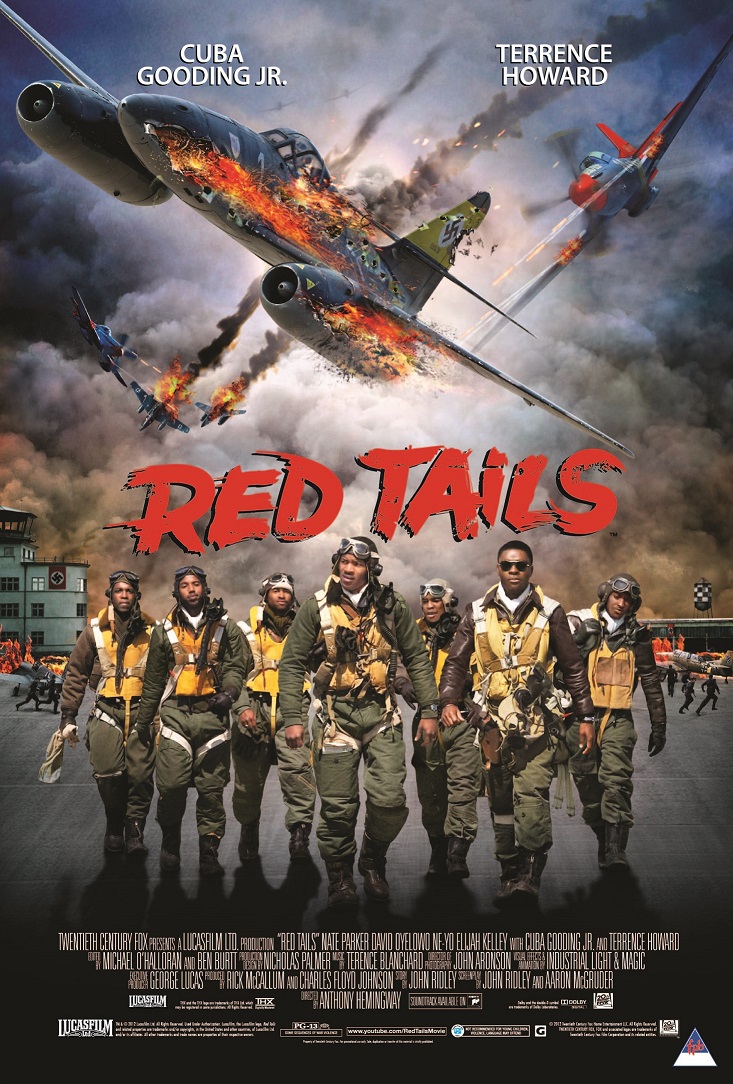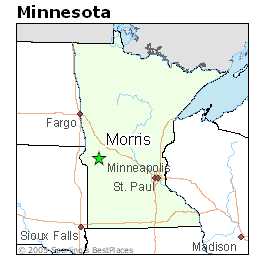The creators actually considered something longer, an epic-type
production that maybe had an intermission. Or, because George Lucas was
involved, maybe we had a "prequel" or sequel on the drawing board.
I have never taken to the "prequel" concept. Why not just start the
whole thing with chapter 1? Oh, because the prequel wouldn't be as
gripping? Well, if it's not as gripping, it's probably not going to sell
effectively.
"Red Tails" did not sell well as a one-shot deal. The public and critics were generally cool.
The Lucas name made me brace myself for lots of CGI (computer
generated images). Indeed that's what we got. CGI isn't all bad but
moviemakers need to remind themselves it's not real. I find by
comparison that WWII movies of the 1960s (my youth) lose nothing for not
having CGI. I wrote not long ago about the flick "The Bridge at
Remagen" (Robert Vaughn). It's fascinating to see all the combat scenes
replicated with "the real things" - tanks and planes etc.
"Remagen" was intense. Whoever made it seemed to be especially
fascinated by tanks. This might be the only movie that shows how fast
tanks can really go.
In "Red Tails" our gaze turns to the sky. A comparable movie from
the 1960s might be "Midway" (Charlton Heston). Like "Midway," "Red
Tails" shoehorns in a love story as if the creators just felt it was
needed. Perhaps the "Midway" creators, in telling the story of the naval
turning point of World War II, felt this movie would get waterlogged
without a love story.
In "Red Tails" a flyer nicknamed "Lightning" spots a beautiful
woman while aloft, and she's on the ground doing her daily chores. He
then tracks her down. Boy meets girl. Somehow they find the time to
develop the relationship to marriage talk. Oh, but he'll have to remain
in Italy. That's a condition. In the end there's tragedy. "Lightning"
doesn't make it. We see how the woman gets informed (like in the opening
scene of "Saving Private Ryan" when a military vehicle heads up a dusty
road toward the residence of a war mother in America's heartland).
War could be hell for the flyers of the 332nd fighter group.
It was General Sherman who said "war is hell." Actually that famous quote is a paraphrase. But "hell" it is.
I grew up during the Viet Nam War. My generation sees more of the tragedy and less of the glory in war.
In writing about "Red Tails," I fall into the same frame of mind as
when writing about the Martin Luther King Jr. holiday. I suspect that
the wonderful young people of today have a hard time understanding a
world in which we had this rigid dichotomy of "whites" and "coloreds."
"Caucasians" and "Negroes." Unspeakable contempt toward the blacks who
got a moniker I won't even type here.
I suspect young people are puzzled. The old dichotomy became impractical if not morally unacceptable, a long time ago.
A rainbow culture grew. The idea of "skin color" as an identifying
feature seemed to become downright stupid. Non-white people with no
African connections became more commonplace. The "races" have mixed
more.
So today, I don't think the average young person really assigns any
weight, or makes any judgment, based on skin color. I'm sure there are
exceptions. But there's no comparison to the previous era when racism
could be institutionalized.
It's this awful institutional racism we see on the screen with "Red
Tails." Hollywood isn't letting go of this. As I write this, we're
seeing the unveiling of the movie "42" about Jackie Robinson. We're
reminded there was a time when the so-called "coloreds" couldn't play
major league baseball. People my age understand the historical context.
But again, I think young people are going to be a little puzzled.
They are going to be revulsed seeing an era portrayed when the dichotomy
of "whites" and "coloreds" cast such an unpleasant overtone over
American life. They'll wonder what their ancestors were thinking. As
well they should.
Racism will always be in the historical record. The Internet
ensures that nothing can be covered up. But these big screen displays
that accent all that bad stuff might be counterproductive. Is this one
reason "Red Tails" didn't seem to go over particularly well?
I would say Lucas didn't help when he made racially tinged comments
himself. These got lots of press when the movie was introduced. They
stuck in my head. He talked about the tough road for getting financing
for "an all-black cast." You'd think there were nothing but blacks in
the movie. Actually a fair number of white faces are sprinkled around.
This includes the stereotypical "bad guy" enemy character, a flying ace.
The bad guy seems much like the "Tavington" character in the
Revolutionary War movie "The Patriot." In "The Patriot," the bad guy is
way overdone, to where he's finally killed, it seems grossly overdue.
The bad guy in "Red Tails" finally gets shot down by the flyer who fell
in love and was to marry. "Lightning" kills "Pretty Boy" but he crashes
and dies. This happens when the Red Tails are escorting the big bombers
toward Berlin. "Pretty Boy" was in a new kind of Nazi jet fighter. The
Nazis had some interesting new toys but they were toast.
Terrence Howard leads our "Red Tails" as Colonel Bullard. He advocates for his boys, trying to penetrate the racism.
The movie starts with the flyers doing "mop-up" type missions. They
take on ground transport. We see them wiping out a rail unit. I guess
the flyers felt demeaned or relegated to routine missions. But it sure
looked intense and important to me. I see no reason they should feel
disrespected being sent on such duty. In fact, didn't your typical
soldier shudder at the prospect of real, intense conflict with the
enemy? Weren't they thankful for the routine and non-dangerous days?
Isn't it a natural human impulse to want to stay alive?
Yes, the soldiers would "do their duty." But I'm sure they didn't savor the actual combat.
We're told the 332nd fighter group ("Tuskegee Airmen") wanted
higher-prestige missions. That's fine as far as it goes. But
higher-prestige also spells greater risks.
At the end, the 332nd was supposed to be relieved by an all-white
squadron en route to Berlin. Propaganda. The 332nd feels let down, as
portrayed in the movie.
The relief squadron fails to show. So the Red Tails get their
"glory" after all. Part of the price that gets paid, is that "Lightning"
becomes a casualty. Thus he is denied the life that awaited him, one of
marrying that wonderful Italian girl and having children and
grandchildren. It's gone with the wind.
But the 332nd gets affirmed as a heroic war unit.
I suspect most war veterans don't put much stock in "glory."
They're happy to be alive. The "glory" gets reserved for Memorial Day
speeches. The young men who were killed would love to have foregone war.
Their voices can no longer be heard. Instead we hear about "freedom
isn't free." It isn't, I suppose. But what were we fighting for in Viet
Nam? Was it really "freedom?"
Getting the bombers all the way to Berlin meant the war was winding
down. All that remained was the miserable work of wiping out the Nazis.
Most of the morale problems in troops' ranks were at this stage of the
war - mutinous inclinations etc. That's because the war's outcome was
determined. This is illustrated no better than in the movie "The Bridge
at Remagen" in which cynicism is thick.
The Red Tails proved themselves. Should we have been surprised at
all by that? Didn't the black troops come through in the movie "Glory"
also? "Glory" was about the U.S. Civil War, for crying out loud. It was
set 3/4 of a century earlier than World War II. How many times do these
black people have to prove themselves? Of course they can fight.
Again, young people are going to be a little mystified. They can't
conceive of a world in which there's a predisposition toward thinking
people of non-white skin color can't adequately perform in battle. The
"battle" itself seems primitive and rather pathetic, with waves of human
beings sent hurtling against each other with tools designed to rip
human flesh apart. If blacks could somehow be excused from this, or
relegated to so-called "mop-up" work, all the more power to them, I
feel.
I'm showing my boomer sensibilities here. "Make love not war."
Apparently the tails of the planes weren't painted red just to
acknowledge this group of flyers. They were red because this was a new
batch of P-51 Mustang planes that were designed that way. The 332nd
takes these cockpits for their first mission protecting the "flying
fortresses." The white guys were having a problem staying close to the
big bombers. They'd take off trying to get "kills." The 332nd was guided
toward showing more discipline, staying close and protecting. It was
mission accomplished for the Red Tails.
These airmen eventually got the Presidential Unit Citation. Members
were eventually welcomed into an officers club (a bar). Young people
might wince and think "man, you mean it was a big deal whether they'd
even be allowed in a bar? American soldiers? Was our society really that
backward?"
It's remindful of the signature Robert Vaughn line toward the end
of "The Bridge at Remagen." Hearing planes overhead, he asks "ours or
theirs?"
"Enemy planes, sir," he is told. There's a pause after which
Vaughn, an honorable German officer about to be executed, says "but who
is the enemy?"
"Red Tails" tells a story that may be true, but maybe it should be
relegated more to the (shameful) dustbin of history. And to the
textbooks. And to the Internet.
War is hell. Maybe that's all we need to know.
- Brian Williams - morris mn minnesota - bwilly73@yahoo.com























No comments:
Post a Comment